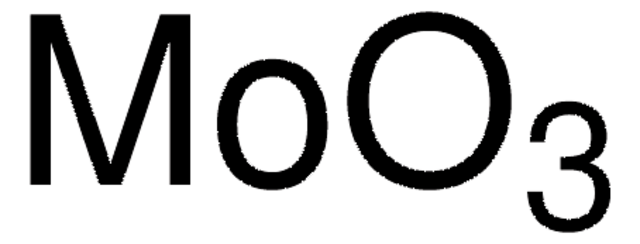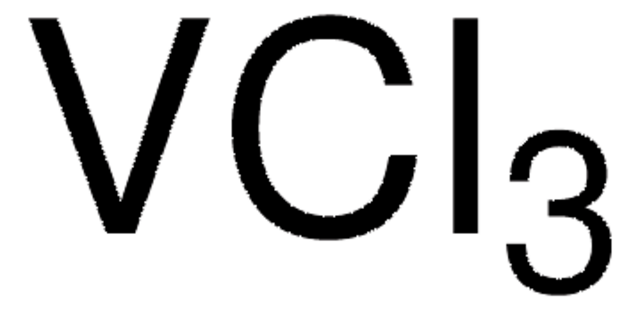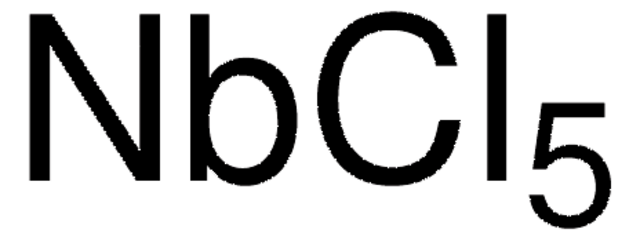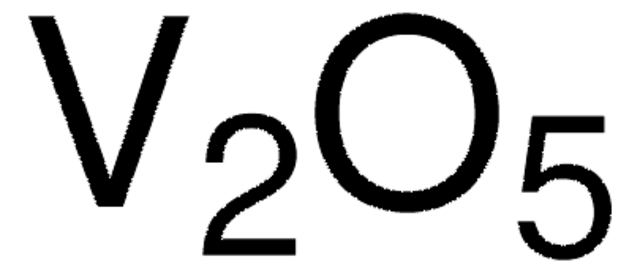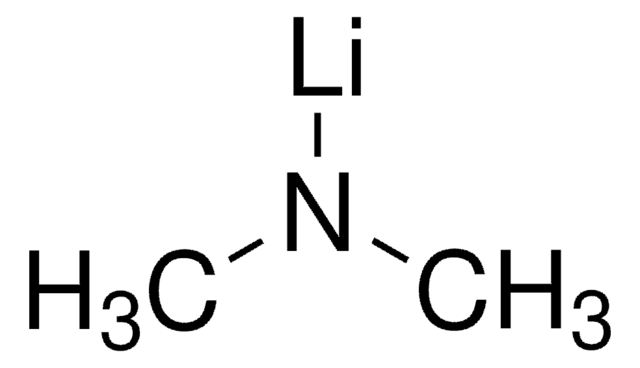208353
Molybdenum(V) chloride
95%
Synonym(s):
Molybdenum pentachloride, Pentachloromolybdenum
About This Item
Recommended Products
grade
for analytical purposes
Quality Level
vapor pressure
1.75 mmHg ( 25 °C)
131 mmHg ( 250 °C)
Assay
95%
form
powder
reaction suitability
reagent type: catalyst
core: molybdenum
impurities
<0.5% insoluble matter
bp
268 °C (lit.)
mp
194 °C (lit.)
density
2.928 g/mL at 25 °C (lit.)
application(s)
battery manufacturing
SMILES string
Cl[Mo](Cl)(Cl)(Cl)Cl
InChI
1S/5ClH.Mo/h5*1H;/q;;;;;+5/p-5
InChI key
GICWIDZXWJGTCI-UHFFFAOYSA-I
Looking for similar products? Visit Product Comparison Guide
Related Categories
General description
Application
- Condensation of nitrobenzene with alcohols and C-C coupling of alkenyllithium reagents.
- Direct amidation of benzylic alcohols with sulfonamides and carbamates.
It can also be used as aprecursor to synthesize alumina/molybdenum nanocomposites and methylenemolybdenumreagents for chemoselective carbonyl alkenation.
Signal Word
Danger
Hazard Statements
Precautionary Statements
Hazard Classifications
Carc. 2 - Eye Dam. 1 - Skin Corr. 1B
Storage Class Code
8A - Combustible corrosive hazardous materials
WGK
WGK 3
Flash Point(F)
Not applicable
Flash Point(C)
Not applicable
Choose from one of the most recent versions:
Already Own This Product?
Find documentation for the products that you have recently purchased in the Document Library.
Customers Also Viewed
Articles
In the last two decades, a new method termed solid-state metathesis (SSM) has been developed to synthesize compounds that are often difficult to produce conventionally.
Our team of scientists has experience in all areas of research including Life Science, Material Science, Chemical Synthesis, Chromatography, Analytical and many others.
Contact Technical Service


